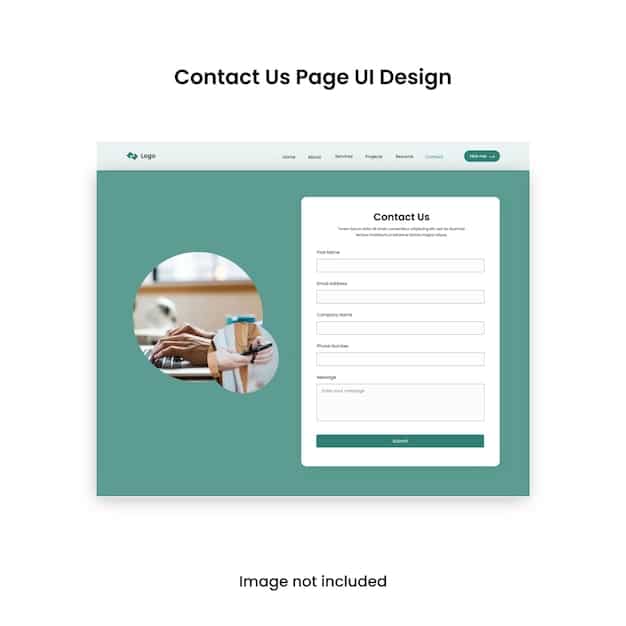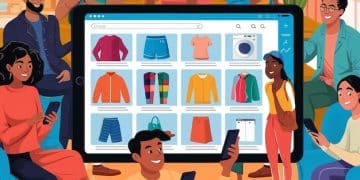How to Use Customer Segmentation for Personalized Customer Experiences

How to use customer segmentation? By dividing your customer base into distinct groups based on shared characteristics, you can create targeted marketing campaigns and deliver personalized experiences that drive results. This approach enhances customer satisfaction and boosts revenue.
In today’s competitive landscape, generic marketing simply doesn’t cut it. Customers crave personalized experiences, and businesses that fail to deliver risk falling behind. How to use customer segmentation becomes a critical question. Understanding and catering to the unique needs and preferences of your target audience is essential for driving customer loyalty and achieving sustainable growth. Through effective segmentation, businesses can create tailored experiences that resonate with customers on a deeper level, ultimately boosting engagement and revenue.
Understanding Customer Segmentation: The Foundation of Personalization
Customer segmentation is the process of dividing a broad consumer or business market into sub-groups of consumers based on shared characteristics. These characteristics can include demographics, psychographics, behavioral patterns, geographic location, and more. Let’s dig deeper into the foundation of personalization.
Benefits of Customer Segmentation
Why bother segmenting your audience? The benefits are numerous and impactful.
- Improved marketing ROI: By targeting specific segments with tailored messages, you can significantly increase the effectiveness of your marketing campaigns.
- Enhanced customer loyalty: Personalized experiences foster stronger relationships with your customers, leading to increased loyalty and advocacy.
- Increased revenue: By understanding your customers’ needs and preferences, you can identify opportunities to upsell and cross-sell, driving revenue growth.
- Better product development: Segmentation can reveal unmet needs and preferences, informing product development and innovation.
Ultimately, **how to use customer segmentation** effectively hinges on understanding these fundamental benefits.
Identifying Key Segmentation Variables: A Data-Driven Approach
The success of your customer segmentation strategy depends on identifying the right variables. These variables will allow you to create meaningful segments that inform your personalization efforts. Here’s a breakdown of different approaches.

Types of Segmentation Variables
There are several categories to consider when identifying segmentation variables:
- Demographics: Age, gender, income, education, occupation, family size and marital status are classic options.
- Psychographics: Lifestyle, values, interests, attitudes, and personality traits provide deeper insight into customer motivations.
- Behavioral: Purchase history, website activity, engagement with marketing campaigns, and product usage patterns reveal valuable insights.
- Geographic: Location, climate, population density, and urban/rural settings.
Choosing the right variables depends on your business goals and the specific needs of your customers. Mastering how to use customer segmentation to deliver personalized experiences that drive results involves selecting the most pertinent variables for analysis.
Combining multiple variables can lead to more granular and insightful customer segments. For example, analyzing purchase history and website activity can reveal valuable insights into customer preferences and purchase intent. Similarly, merging demographic data with psychographic information can uncover underlying motivations and values.
Data is key to identifying which variables are most relevant for your business. Leverage your CRM system, website analytics, social media insights, and customer surveys to gather information. Don’t be afraid to experiment with different combinations of variables to see which ones yield the most actionable insights.
By taking a data-driven approach, you can identify the key segmentation variables that will allow you to create truly personalized experiences for your customers. Remember, effective segmentation is an ongoing process that requires continuous monitoring and refinement.
How to Use Customer Segmentation to Deliver Personalized Experiences That Drive Results
Now comes the crucial part: transforming your segments into personalized experiences, which is how to use customer segmentation to deliver personalized experiences that drive results. Personalization can take many forms, from tailored email marketing to personalized website content and product recommendations. Let’s look at some practical strategies.
Tailoring Your Marketing Messages
Generic marketing blasts are quickly becoming a thing of the past. Customers expect to receive messages that are relevant to their individual needs and interests.
- Craft personalized email campaigns that address specific segment-based pain points, highlighting the benefits of your products or services.
- Use dynamic content on your website to display customized messages and product recommendations based on visitor segmentation.
- Tailor social media ads to reach specific segments with targeted messaging.
Personalization isn’t just about using a customer’s name in an email. It’s about demonstrating that you understand their needs and are committed to providing them with a valuable experience. Thinking of how to use customer segmentation to deliver personalized experiences that drive results requires this deeper understanding.

Consider purchase history, browsing behavior, and demographic information to customize your messaging. If a customer recently purchased a product, send them a follow-up email with relevant accessories or complementary products. If a customer frequently visits a specific page on your website, display personalized content related to that topic the next time they visit.
Personalization can also extend to product recommendations and exclusive offers. Based on a customer’s past purchases and browsing history, recommend products that might be of interest to them. Personalized offers, such as discounts or free shipping, can incentivize purchases and drive customer loyalty and answer to the question how to use customer segmentation to deliver personalized experiences that drive results.
By tailoring your marketing messages to specific customer segments, you can significantly increase engagement, drive conversions, and build stronger relationships. This requires ongoing analysis and optimization, but the results are well worth the effort.
Implementing Personalized Experiences Across Channels
Personalization shouldn’t be limited to just your marketing messages—it should extend across all customer touchpoints. This means creating consistent and relevant experiences regardless of how a customer interacts with your business that relates **how to use customer segmentation to deliver personalized experiences that drive results**.
Personalization in Customer Service
Customer service interactions offer a prime opportunity to personalize the experience.
- Equip your customer service representatives with access to customer segmentation data, allowing them to understand individual needs and preferences.
- Tailor support interactions based on customer history and past issues.
- Proactively offer personalized solutions and recommendations based on customer segment.
By empowering your customer service team with customer insights, you can transform support interactions into moments of genuine connection. This demonstrates that you value your customers’ individual needs and are committed to providing them with exceptional service, which answers the question **how to use customer segmentation to deliver personalized experiences that drive results**.
- Website personalization: Use dynamic content to display personalized offers.
- In-app personalization: Recommend features.
- Sales Personalization: Tailor sales pitches focusing on the things the customer is interested in.
Consistency is key to delivering seamless personalized experiences across all channels. Ensure that your customer segmentation data is integrated across your marketing, sales, and customer service systems. By creating these experiences, customers will be more satisfied, and revenue will increase.
Measuring the Impact of Personalized Experiences
It’s essential to measure the impact of your personalization efforts to ensure that you’re achieving your desired results. Track key metrics such as customer engagement, conversion rates, and customer satisfaction to gauge the effectiveness of your strategies. This is a key element of **how to use customer segmentation to deliver personalized experiences that drive results**.
Analyze your data to identify what’s working and what’s not. Are certain segments responding better to personalized messaging than others? Are specific personalization tactics driving higher conversion rates? Use your findings to refine your segmentation strategy and optimize your personalization efforts. A/B test different personalization approaches to determine which ones resonate best with your audience. Experiment with different messaging, offers, and content to see what drives the most meaningful results.
Regularly monitor customer feedback and sentiment to gauge their reactions to your personalized experiences, answering the question of how to use customer segmentation to deliver personalized experiences that drive results. Use surveys, social media listening, and customer reviews to gain insights into their perceptions and preferences.
By continuously monitoring and measuring the impact of your personalization efforts, you can refine your strategies, optimize your campaigns, and deliver increasingly relevant and valuable experiences to your customers. This ongoing process will help you to build stronger customer relationships and achieve sustainable growth.
| Key Point | Brief Description |
|---|---|
| 🎯 Segmentation | Divide customers into groups based on shared characteristics. |
| ✉️ Personalized Marketing | Tailor messages to resonate with each segment’s needs. |
| 📊 Data-Driven Insights | Use data to refine segments and personalize experiences. |
| 💰 ROI Measurement | Track results to ensure effectiveness of personalized strategies. |
Frequently Asked Questions
Customer segmentation improves ROI, enhances loyalty, increases revenue, and informs better product development. It enables businesses to tailor their efforts and messaging for maximum impact.
Customer segments should be reviewed regularly, ideally every quarter or at least annually. Market dynamics shift often, requiring segmentation criteria to evolve to remain effective.
Personalization, driven by effective segmentation, significantly enhances CX by making interactions feel relevant. Tailoring interactions and content shows customers that the company understands and values their unique needs.
Essential data sources include CRM systems, website analytics, social media insights, and customer surveys. These sources provide valuable information about customer behavior, demographics, and preferences.
Measuring the impact of personalization provides insights into what strategies are working and what aren’t. This data-driven approach allows for continuous refinement, ensuring the effectiveness of personalization efforts.
Conclusion
Mastering how to use customer segmentation to deliver personalized experiences that drive results is no longer optional—it’s a business imperative. By understanding your customers’ needs and preferences, you can create tailored experiences that resonate with them on a deeper level, driving loyalty, engagement, and sustainable growth. By adopting the principles discussed here, and implementing constant iteration, you’ll drive revenue and ensure a long relationship with your customers.





